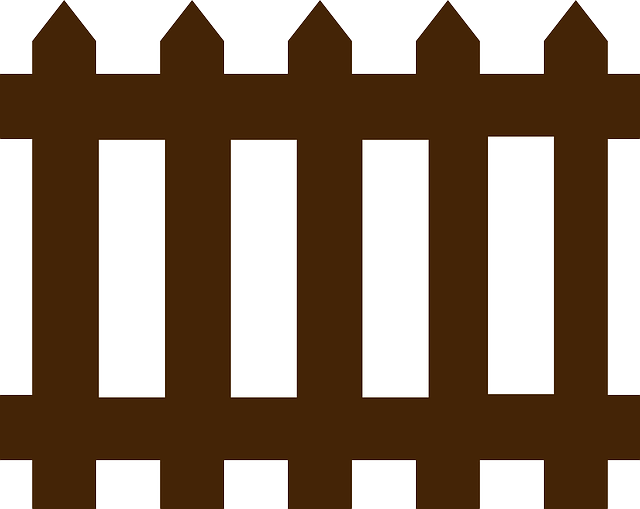Installing a fence is an exciting project for any New Bedford, Massachusetts homeowner looking to enhance their outdoor space. This comprehensive guide offers invaluable insights into the DIY fence installation process, catering specifically to the unique considerations of New Bedford properties. From selecting the perfect fence type to navigating the permitting process and ensuring long-lasting durability, we’ve compiled essential tips to empower homeowners in building a secure and aesthetically pleasing barrier.
- Understanding Your Fence Options for New Bedford Properties
- Measuring and Planning Your Fence Layout Effectively
- Acquiring Necessary Permits for Installation in Massachusetts
- Choosing the Right Materials for Durability and Aesthetics
- Step-by-Step Guide to DIY Fence Installation
- Tips for Maintenance and Longevity of Your New Fence
Understanding Your Fence Options for New Bedford Properties
When it comes to fencing your New Bedford, Massachusetts property, there’s a wide array of options to consider. From traditional wooden picket fences to modern vinyl or chain-link varieties, each style offers unique benefits and aesthetics. Understanding the characteristics of these materials is key to making an informed decision that aligns with both your functional needs and personal taste.
Wooden fences exude natural beauty and warmth, requiring regular maintenance but offering classic charm. Vinyl options are low-maintenance, resistant to rot and rust, and come in various colors and styles. Chain-link fences provide security and durability, ideal for areas needing visibility or where pets need containment. Each type has its own advantages, so evaluating your specific requirements—privacy, aesthetics, budget, and maintenance preferences—is essential before installation.
Measuring and Planning Your Fence Layout Effectively
When planning your DIY fence installation, meticulous measuring and strategic planning are key to a successful project. Begin by assessing your property boundaries and identifying where you want the fence to be located. Use string or chalk to mark out the desired route, taking into account any obstructions like trees, shrubs, or existing structures. Ensure this layout aligns with local regulations and property lines.
Next, decide on the type of fence best suited for your needs and environment. Consider factors like material (wood, vinyl, chain-link), height, and style (privacy, ornamental). Once you’ve chosen, measure the perimeter carefully to determine the required length of materials, considering additional posts and brackets needed for support. Accurate measurements will ensure a fit that’s both secure and aesthetically pleasing.
Acquiring Necessary Permits for Installation in Massachusetts
Before tackling any DIY fence installation project in New Bedford, Massachusetts homeowners must familiarize themselves with local regulations and obtain the required permits. The city or town usually has specific guidelines regarding property alterations, including fence construction. Failure to adhere to these rules can result in fines or even the halt of your project.
Permits ensure that your fence installation complies with safety standards, building codes, and aesthetic considerations. They also demonstrate your responsibility as a homeowner. Contact your local planning department or building inspector to inquire about the necessary permits for your project. This process will vary depending on the type, size, and location of the fence you plan to install.
Choosing the Right Materials for Durability and Aesthetics
When considering DIY fence installation, selecting the right materials is a top priority. For New Bedford homeowners, opting for high-quality, durable options will ensure your fence stands the test of time and withstands the area’s unique conditions, including potential harsh winters. Choose materials that offer resistance to rot, rust, and damage from local wildlife or pests.
Aesthetically, consider the style and color of your fence. Whether you prefer wood, vinyl, or metal, each material offers a range of visual options. Wood provides classic beauty but requires more maintenance; vinyl is low-maintenance and available in various colors and textures; while metal fences offer a modern look with durability to match. Selecting materials that align with your home’s exterior design will enhance the overall curb appeal of your New Bedford property.
Step-by-Step Guide to DIY Fence Installation
To tackle DIY fence installation, start by assessing your yard and planning the fence layout. Measure the perimeter and decide on the style, height, and material that best fit your needs. Obtain any necessary permits from local authorities before beginning construction. Next, mark out the posts’ locations along the desired route using stakes and string for guidance. Prepare the holes for the posts by digging deep enough to ensure stability—typically around 3 feet deep for a sturdy base. Place the posts in the holes and use concrete to secure them, allowing it to set completely. For added support, consider installing corner brackets or strutters. Then, attach the fence panels using appropriate hardware, ensuring they’re level and securely fastened. Regularly inspect your work and make adjustments as needed until the entire fence is assembled.
Tips for Maintenance and Longevity of Your New Fence
Regular maintenance is key to keeping your new fence looking its best and ensuring its longevity. Start by cleaning the fence regularly, removing any debris or leaves that may accumulate. A soft brush and mild soap can be used for a gentle clean. Avoid using harsh chemicals, as they could damage the fence’s surface.
Inspecting your fence for any signs of wear and tear is another important step. Look out for loose boards, rusted nails, or damaged posts. Repairs should be done promptly to prevent further issues. Keep an eye on the surrounding area too, as overhanging branches from nearby trees can cause damage; trim these back regularly to protect your fence.
